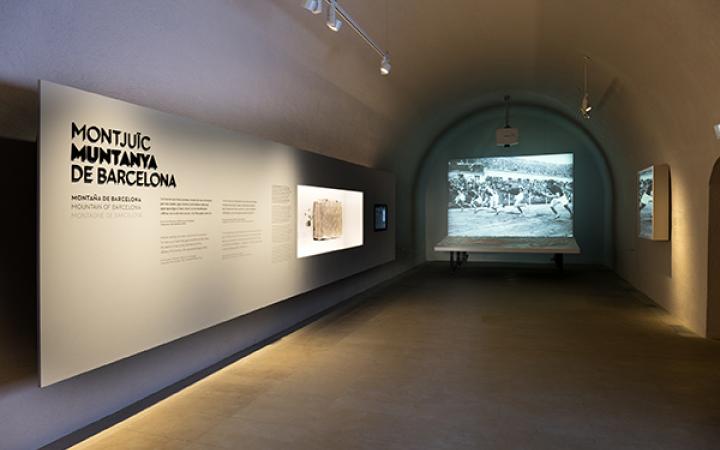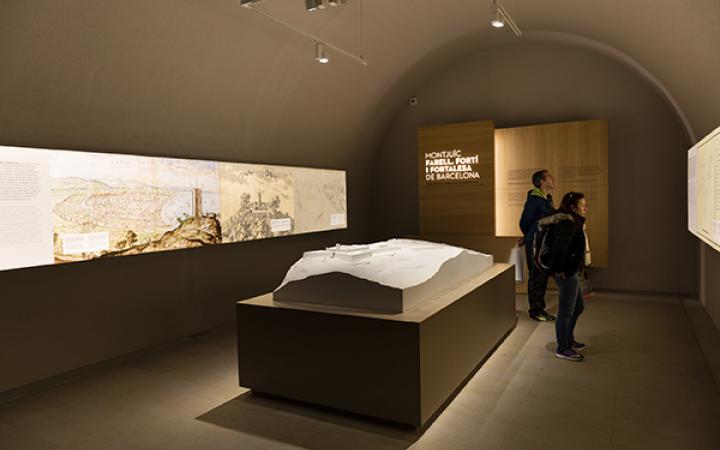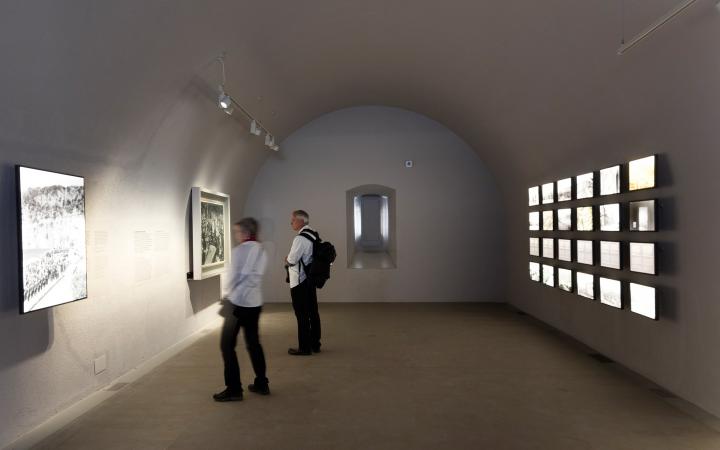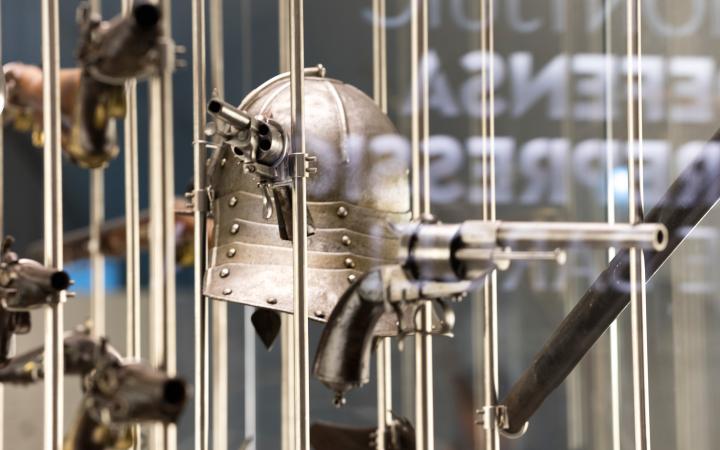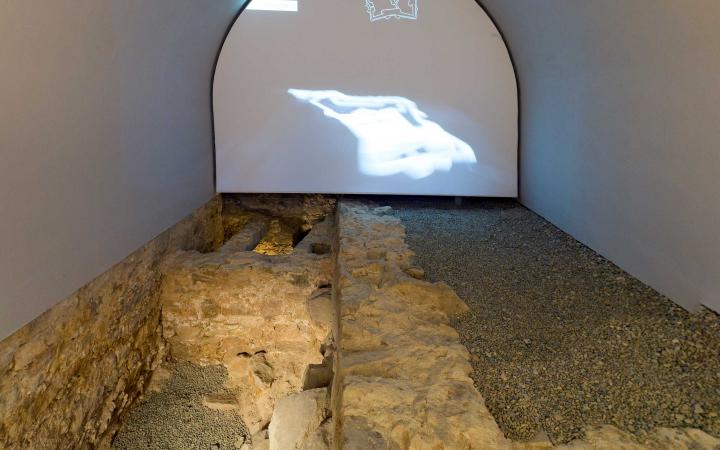Update November 2025: Due to improvement works in our facilities, the Montjuïc Visitor Centre will remain closed until further notice. We apologize for the inconvenience.
Montjuïc, a hill in BarcelonaIn the first room the history and archaeology of the mountain in relation to Barcelona are explained. Thanks to its natural wealth and its privileged position, Montjuïc has been inhabited and exploited since prehistoric times. We know that stone from its quarries was used to build many of the city's most important buildings, from Roman times until the mid-twentieth century.
The various materials and objects on display – found during successive archaeological excavations – date from different epochs and periods, always prior to the construction of military fortress. They illustrate the link between the hill and the city: from the militarized hill to the civilizing, popular hill.
Beacon, fort and castleThe second space focuses on the architectural evolution of the building, ranging from the medieval beacon documented as a defensive lookout point to the beginning of the militarization of the mountain with the construction of the fort motivated by the Revolt of Catalonia (1640-1652) and the modifications to the fortress planned by the military engineer Juan Martin Cermeño in 1751, which would give the castle its present appearance.
Here, visitors can observe the museum display of the remains of a section of the southern bastion of the fort, built at the beginning of the Revolt of Catalonia, and a large model explaining Cermeño’s reforms. The various stages of construction are illustrated by prints and drawings dating from the mid-fifteenth century until the mid-nineteenth century.
Montjuïc, defence and repressionThe third section explores two fundamental aspects of the use of the Castle: as a strategic point guarding and defending Barcelona, especially during the wars of the seventeenth and eighteenth centuries; and as a place of repression, particularly after 1714, when the fortress was used to control the population, and from the nineteenth century, with its use as a military prison.
A series of prints from the epoch, displayed on both sides of the room, illustrate these two functions: the defence of the city, with pictures of the Revolt Of Catalonia and the War of the Spanish Succession; and the repression orchestrated from the hill, with illustrations showing the War of the Pyrenees and the bombardments ordered by General Espartero. The centre of the room is occupied by a large display cabinet containing different types of weapons such as swords, blunderbusses, carbines and pistols.
Prison and memoryIn the fourth and last room, the exhibition focuses on the imprisonments, trials and executions witnessed by the castle from the late nineteenth century until well into the twentieth century. The use of the castle as a prison is explained through several historical events well known to the public: the anarchists imprisoned, tried and condemned to death there for the attack in the street of Carrer dels Canvis Nous (1896); the events of the Setmana Tràgica, the so-called tragic week of 1909, with the execution in the castle moat of Francesc Ferrer i Guàrdia among others; the imprisonment of workers during the strike at La Canadiense in 1919; its use as a prison during the Spanish civil war, with the shooting of up to 250 supporters, counting civilians and soldiers, of the military uprising; and its later use as a military prison during Franco’s dictatorship, with the figure of Lluís Companys, president of the Generalitat Catalan Government standing out in particular, shot by a Francoist firing squad in the Santa Eulàlia Moat on 15 October 1940.
An installation of historical photographs, which in chronological order depicts the various transformations undergone by the Castle, illustrates one of the darkest periods in the history of the castle before it became a military museum.
*Due to improvement works being carried out at Montjuic Castle, Room 17 will be temporarily closed to the public.


